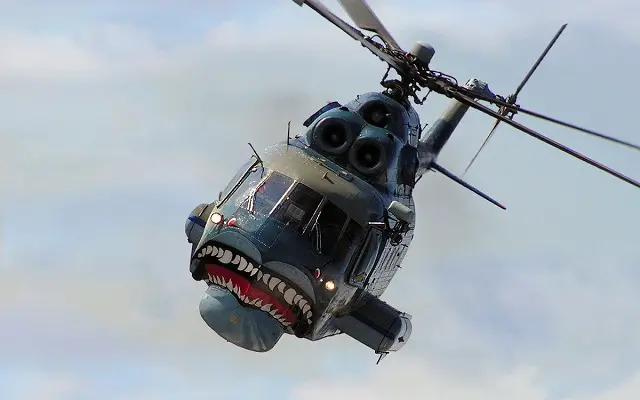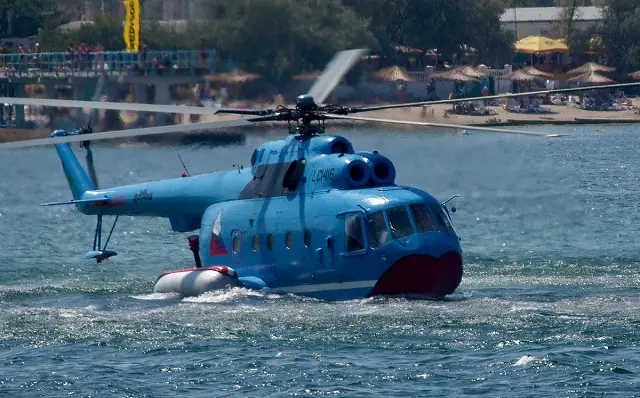Breaking news
Russia May Resume Production of Antisubmarine Amphibious Helicopters.
| 2016
 Amphibious Mi-14 helicopters are designed on the basis of the multirole Mi-8T helicopter. |
|||
However,
Russian Helicopters said in October that it meant "a machine in the
Mi-14 class." The wording implies two approaches to execute the task
- either developing a helicopter from scratch or overhauling and upgrading
the existing Mi-14 fleet. To date, the type is not in service with the Russian Armed Forces, but the Emergencies Ministry uses the Mi-14Ps search and rescue version on a limited scale. Possibly, the Defense Ministry will have these aircraft upgraded. A reason may be that the current defense minister, Sergei Shoigu, had led the Emergencies Ministry for a long time and has been actively introducing the traditions of his former ministry into the armed services, as was the fact with the order for the Beriev Be-200 amphibians. Although the Defense Ministry has confirmed the work on ASW helicopters, it has not specified the variant selected. Many experts are extremely skeptical about the resumption of the Mi-14’s production. The weapons used to be carried by the Mi-14 include the AT-1, AT-2, T-67 and UMGT-1 air-launched torpedoes and 12-50-kg antisubmarine bombs and 250-kg air bomb as well (the FAB-250, in all probability). ASW helicopters operate in pairs, one spotting a submarine and the other attacking her with a torpedo or a bomb. The tactics were used by both the Mi-14 and its US analogs. Today, the Mi-14 is in service with several former and current customers for Russian weapons, including Syria, Poland, Ukraine and Georgia. Center for Analysis of Strategies and Technologies (CAST) Director Ruslan Pukhov believes the feasibility of restarting the old-type amphibian’s production hinges on the availability of new foreign customers for it. "One should know the number of potential domestic and foreign customers [for it]. High hopes were vested in the Be-200 and much money was invested in it. The aircraft was promoted as a unique product, a cure-all for all problems. Only the Russian and Azeri emergencies ministries bought a small number of Be-200s in the end," the expert says. In the analyst’s opinion, the investment in the program may well fail to pay off, given the budget reductions and the stiff competition on the helicopter market. However, the military needs may overcome commercial suitability. In spite of the financial limitations, the Defense Ministry is interested in the high performance of Russian combat helicopters, which has been proven by Deputy Defense Minister Yuri Borisov’s announcement of the Russian military’s plans to return gravity bombs to the Russian rotorcraft’s weapons suites made up of rockets, missiles and guns. According to him, bombs onboard helicopters are extremely "relevant", expert Svyatoslav Ivanov says in his article published by the Gazeta.ru news portal. - © Copyright 2016 TASS. All rights reserved. This material may not be published, broadcast, rewritten or redistributed. |
|||



























